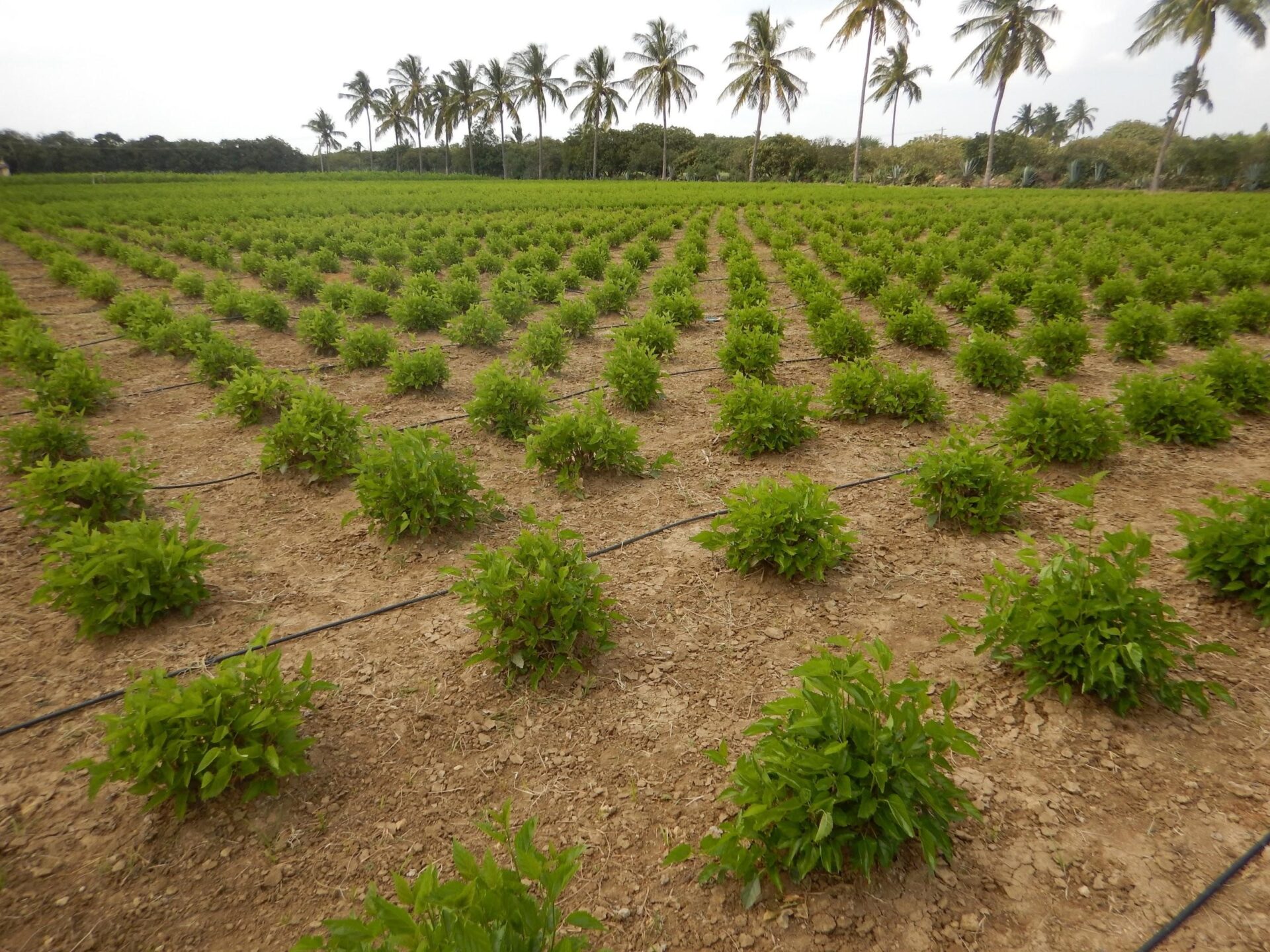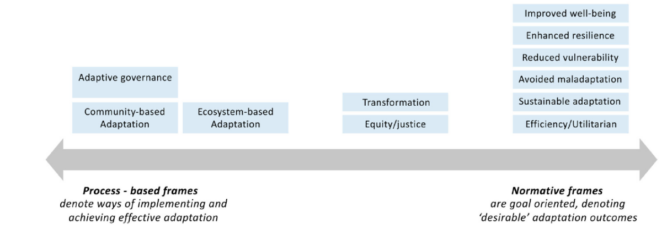Interrogating ‘Effectiveness’ in Climate Change Adaptation: 11 Guiding Principles for Adaptation Research and Practice

Introduction
Climate change adaptation has moved from understanding vulnerabilities to climate change to a post-Paris Agreement world with a global goal on adaptation. This goal aims to ensure an ‘adequate adaptation response’ to the ‘global temperature goal’, thereby enhancing adaptive capacity, strengthening resilience, and reducing vulnerability to climate change, ultimately contributing to sustainable development. However, there remain conceptual and methodological challenges in defining an adaptation goal and mixed evidence on what effective adaptation looks like and how it can be enabled.
This article demonstrates how different normative views on adaptation outcomes, arising from different epistemological and disciplinary entry points, can lead to very different interpretations of adaptation effectiveness. The article argues that how effectiveness is framed will significantly impact adaptation implementation and outcomes. This, furthermore, represents a way of exercising influence in adaptation decision-making. Eleven principles of effective adaptation were distilled as a way to condense guidance in international processes such as the Global Stocktake as well as national and sub-national exercises on tracking and monitoring adaptation.
*This weADAPT article is an abridged version of the original text, which can be downloaded from the right-hand column. Please access the original text for research purposes, full references, or to quote text.
Methods and Tools
To examine how effectiveness is conceptualized and operationalized in the adaptation literature, we identified different frames used in 192 peer-reviewed publications and and 51 grey literature publications. In the adaptation literature, frame analysis has been used in various ways; e.g. to examine the emergence of different adaptation heuristics, adaptation governance and policy approaches, and how power mediates adaptation. ‘Frames’ encompass narrative devices through which issues, actions, policies, decisions, or events acquire meaning, or are strategically used to build support for different actions (Rein & Schön, 1996).
The process of identifying frames resulted in 11 frames (Figure 1). For each frame, we reviewed the literature to answer four questions:
- How does the frame define effective adaptation?
- What are the metrics used to capture effectiveness?
- What does the frame mean for the most vulnerable?
- Are there reported examples that use this frame?
Our enquiry explicitly focussed on vulnerable communities to capture how different frames can have negative or positive impacts on those most exposed to or least prepared for climatic risks.

To contextualize the eleven frames, we draw on empirical evidence from five case studies in the Adaptation at Scale in Semi-Arid Regions (ASSAR) project.
The empirical examples were chosen to portray different livelihood systems and dynamics (pastoralism, smallholder agriculture, rural-urban migration) as well as varied socio-ecological contexts (India, Mali, Namibia, Kenya).
Outcomes: 11 Guiding Principles
- Efficiency or utilitarian frame: Adaptation should minimise costs and maximise benefits.
- Effective Adaptation as Improved Wellbeing: Adaptation should support achievement of material, subjective, and relational wellbeing goals.
-
Effective adaptation as reduced vulnerability or increased adaptive capacity: Adaptation should reduce vulnerability and/or increase adaptive capacity, especially of the most vulnerable and those most at risk to climate change.
-
Effective adaptation as enhanced resilience:Adaptation should increase resilience by building functional persistence over long timescales so that systems have the ability to bounce back from climatic shocks.
-
Effective adaptation as sustainable adaptation: Adaptation should be economically, ecologically, and socially sustainable, explicitly looking at longer-term, cross-generational viability of adaptation actions.
-
Effective adaptation as avoiding maladaptation: Adaptation should take into account unintended negative consequences and explicitly look at the cross-scalar, long-term impacts of adaptation actions.
-
Effective adaptation as ecosystem-based adaptation: Adaptation should invest in ecosystem conservation, management and restoration to enhance ecosystem services, and subsequently reduce impacts of climate change on social and ecological systems.
-
Effective adaptation as community-based adaptation: Adaptation prioritisation, implementation, and monitoring should be co-produced with communities to ensure inclusive and sustainable adaptation.
-
Effective adaptation as adaptive governance: Adaptation should be oriented towards achieving transparency, accountability and representation in governance through multiscalar, participatory, and inclusive processes.
-
Effective adaptation as just and equitable: Adaptation should be oriented toward socially just and equitable processes and outcomes.
-
Effective adaptation as transformation: Adaptation should be a process that fundamentally changes human thinking and practices in the face of climate change and overtly challenges the power structures that generate vulnerability.
Real world examples of the principles can be found in the full article, downloadable on the right.
Principles for Effective Adaptation: A Tentative Way Forward
These eleven frames of effective adaptation (EA) are put forth as a contribution to the growing ‘adaptation science’ literature that is critically examining how heuristics and metrics used to conceptualize and measure adaptation effectiveness have real-word implications on adaptation outcomes. Different principles, rooted in specific epistemologies and methodologies to assess EA, privilege certain aspects of adaptation while potentially leaving out others.
The EA frames discussed in this review range from being normative to more process-based. Notably, the frames fall along a continuum and frames can simultaneously be process- and outcome-based. Critically, the differences between frames mean that they are informed by different underlying assumptions, thereby lending themselves to different metrics of assessing progress.
Clearly, adherence to all eleven principles of effective adaptation may not be feasible or even desirable. Because they reflect different prioritizations and approaches, inherent trade-offs exist between many of them. However, we argue that the discomfort these trade-offs highlight is crucial for the adaptation community to acknowledge and in fact, these trade-offs are only rendered visible when we look across the eleven principles and consider their implications. This would enable explorations, in ways more pragmatic than conceptual, of, for instance, the focus, conflicts, and outcomes of community based adaptation (CbA) versus ecosystem-based adaptation (EbA). The list of principles is thus presented as a way to acknowledge that different frames use different entry points and metrics to operationalize effectiveness and how choosing certain frames for defining and tracking adaptation outcomes can lead to different results.
Suggested Citation:
Chandni Singh, Soundarya Iyer, Mark G. New, Roger Few, Bhavana Kuchimanchi, Alcade C. Segnon & Daniel Morchain (2021) Interrogating ‘effectiveness’ in climate change adaptation: 11 guiding principles for adaptation research and practice, Climate and Development, DOI: 10.1080/17565529.2021.1964937
Related resources
- Adaptation metrics: Perspectives on measuring, aggregating and comparing adaptation results
- Addressing the risk of maladaptation to climate change
- Unpacking Transformation: A framework and insights from adaptation mainstreaming
- Advancing disaster policies by integrating dynamic adaptive behaviour in risk assessments using an agent-based modelling approac
- Using the Analytic Hierarchy Process to support decision making on climate change adaptation
- Why popular support tools on climate change adaptation have difficulties in reaching local policymakers: Qualitative insights fr
- Adaptation at Scale in Semi-Arid Regions (ASSAR)
(0) Comments
There is no content